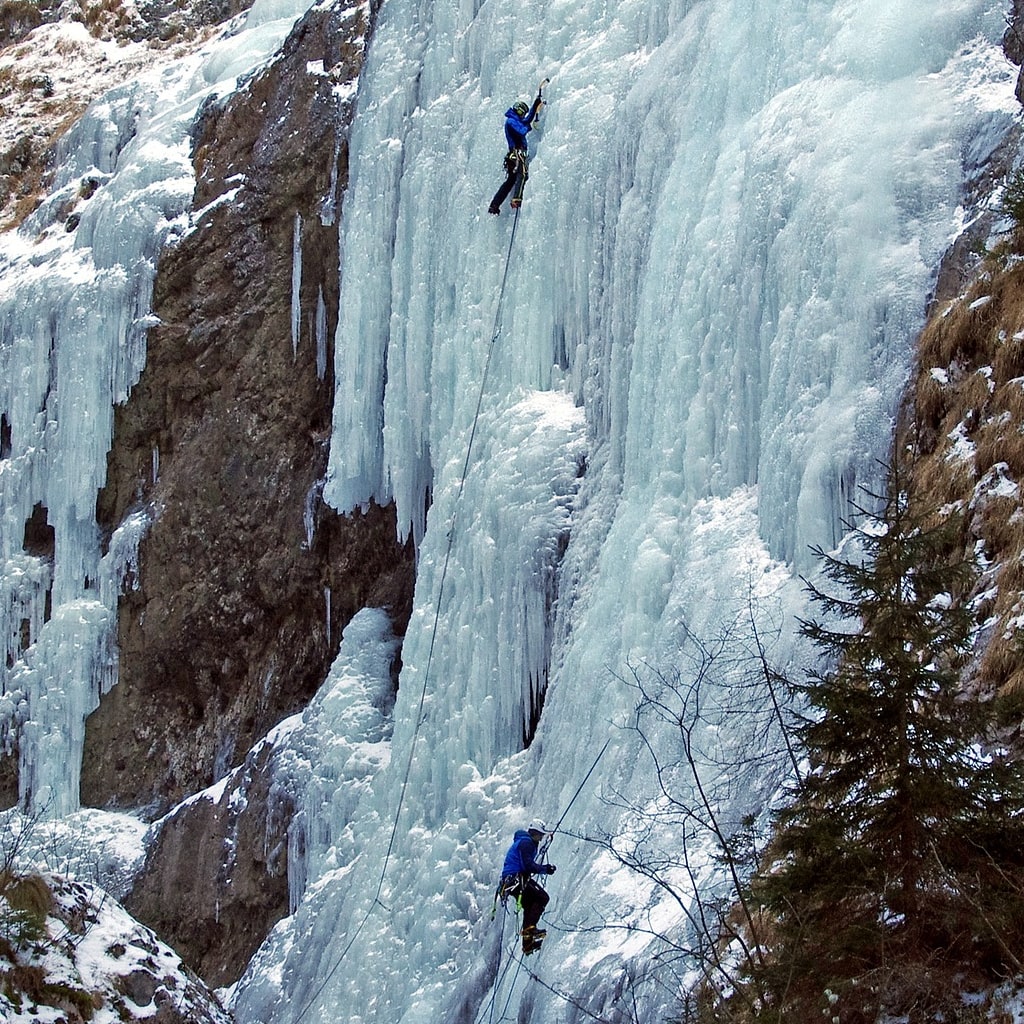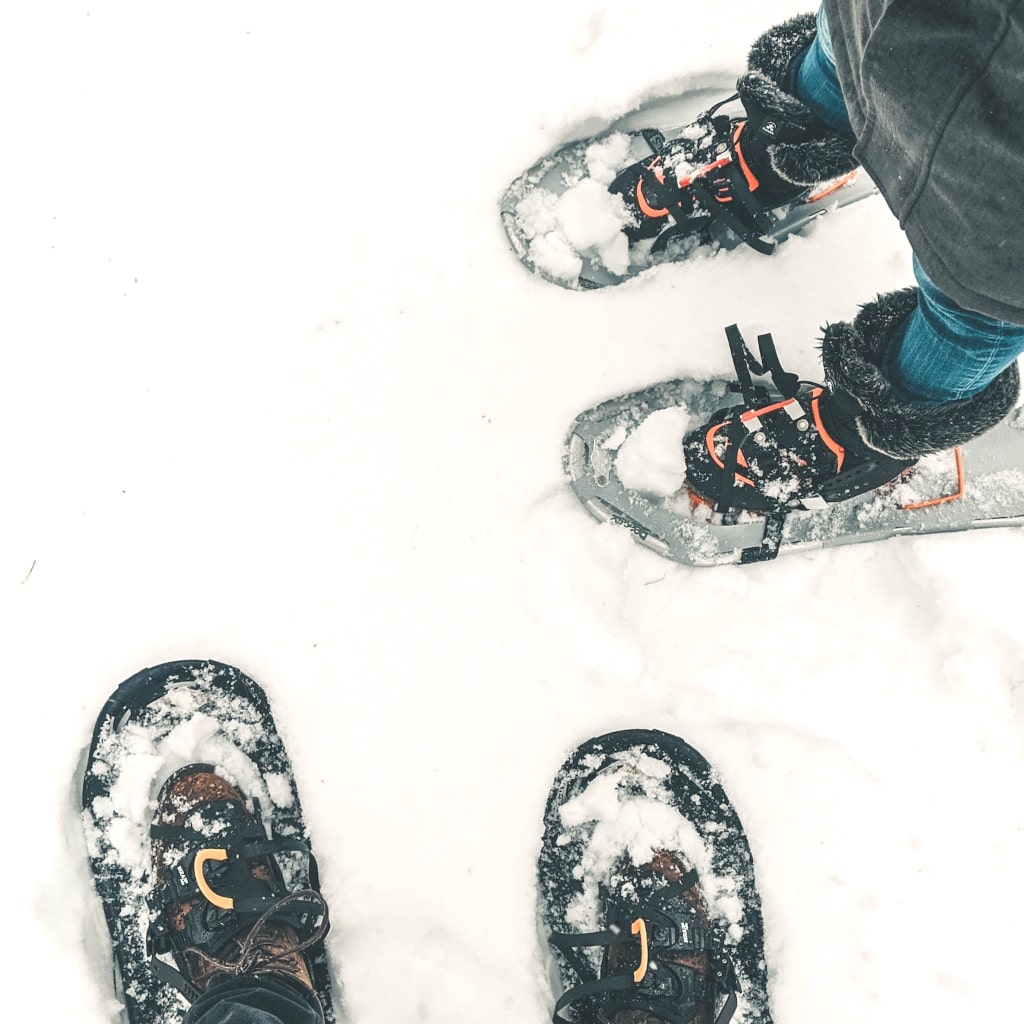Inspired for an Adventure? Check out Beef Stroganoff - Pouch and Beef Stew - Pouch
Free Ground Shipping On All Orders
Over 2,100 Reviews
Add description, images, menus and links to your mega menu
A column with no settings can be used as a spacer
Link to your collections, sales and even external links
Add up to five columns
Add description, images, menus and links to your mega menu
A column with no settings can be used as a spacer
Link to your collections, sales and even external links
Add up to five columns


Snow can be both boon and bane for outdoor travelers. When nice and firm, it can be a pleasure to scuff along, above all the terra firma messiness of brush, gravel, or deadfall. When soft and powdery, it invites long cross-country ski or snowshoe outings.
But then there’s the flipside: the half-melted slush absolutely exhausting to traverse for long distances, the rock-hard, ice-glazed slopes, the deep, brittle-crusted drifts you maddeningly posthole your way through. Not to mention, of course, all the outright hazards of the snowscape: crevasses, cornices, avalanches, weakly frozen-over bodies of water, etc.
Here we’ve rounded up a general assortment of snow travel tips: advice on everything from basic gear to rewarding route-finding. We hope you'll find something useful for your next adventure out in the white stuff!
Snow Hiking Gear List
Hiking in winter or snowy country any time of year means—no surprise—layering. You obviously need to keep warm, but you’re also going to be working up a mean sweat through the basic exertion of traveling across the snow. Insulate yourself while managing moisture by packing snow hiking essentials: a base layer, midlayer, and outerwear, including an upper and lower shell that can stand up to inclement weather.
Regarding snow hiking pants, you’ll want some layers to play around with: a full-leg base layer (such as long-underwear bottoms), a pair of softshell pants, and shell pants, which might include fleece-lined or otherwise insulated material. What you wear depends on the conditions and your body’s perspiration production. Peel down layers when trekking to help lessen sweat, and layer up when stopping for a break to maintain body heat, which helps keep muscles from stiffing in the cold air.
Waterproof and insulated winter or mountaineering boots, either leather or plastic, are best for snow travel. If you’re going to wear snowshoes or crampons during your trek, you’ll obviously want to ensure your boots properly fit their bindings.
Invest in a pair of gaiters, the full-length kind being best for serious winter hikers. Gaiters provide a layer of insulation for those shins and calves of yours that will be (short of your feet, of course) the most snow-exposed part of your body. They also prevent snow from getting into your boots and cushion against the crust, logs, rocks, and other potentially painful obstructions.
Use ski poles whether you’re cross-country skiing or not: for balance, testing snow conditions, and maybe even erecting a rough-and-ready shelter. An ice ax serves snow hikers, mountaineers and mountain climbers in both rough terrain and technical climbs. We’ll cover some ice-ax basics later in the article.
Snowshoes and cross-country skis are classic winter travel aids, of course, but you may also consider traction devices for your boots. Snow spikes for hiking (aka microspikes) work best on fairly level terrain; if you’re dealing with gnarlier slopes, you might want to invest in a pair of crampons. Strap-on hinged crampons with horizontal front points lend themselves best for winter hiking and general, non-technical mountaineering.
A snow shovel is a versatile and potentially life-saving tool in the snowy backcountry, serving as a means of testing snowpack stability, building a snow cave or other emergency shelter, and excavating buried avalanche victims.
In a recent blog post we covered the basics of avalanche safety, which we encourage you to read through; depending on where and when you’re going snow-adventuring, you may well want to pack avalanche-specific equipment such as a transceiver and avalanche probe.
Mountaineers bring along wands (store-bought or homemade) for retracing their way back over trackless snowfields or in whiteout conditions, and less technically inclined snow hikers might also consider these route finding aids if they plan on doing a lot of major backcountry trekking.
How to Travel Safely in Snow
As we alluded to at the beginning, snow can make cross-country travel easier by blanketing over obstacles, from jungly shrub thickets to scree slopes. Not insignificantly, it also generally lightens the impact of off-trail hiking.
If you are traveling by trail, keep in mind that it may be difficult to follow under a snowpack if no one has hiked or snowshoed across the trail recently. Obviously, this is more of a concern for a lesser-used National Forest route, for example, than a well-marked trail such as state park or county recreation area. Maintaining orientation skills like map reading and compass navigation skills (plus a GPS) are mandatory.
Atmospheric conditions affect how snow crystals form and once on the ground the snowpack changes over time, sometimes very dramatically. The myriad of snow and snowpacks often raise a challenge to hikers traversing trails and routes. Here are some general approaches for safely and comfortably traversing the variable and evolving snowscape:
- On sunny and warm days, try to do most of your long-distance snow travel in the morning, when the night’s frozen crust is still intact. By afternoon, the snowpack may be slushing up, turning into a gloppy mess miserable to slog through and ramping up avalanche risk to boot.
- If you do find yourself punching or skittering through slushy snow, seek a more shaded route where the snowpack is likely firmer to improve your hike.
- Beware of the snow holes or moats often edging rocks, stumps, and trees.
- In timbered country, don’t be blasé about fallen logs. Under a deep, firm snowpack, most may not be an issue. But when they’re partly snow-covered, it’s easy to twist an ankle in the cavities along them or on a buried branch or root nub. And be careful of your footing if you’re stepping across such logs, as slightly snow-mounded ones can be slippery indeed.
- In hilly or mountainous terrain, ridges often offer the safest, easiest throughways. But be extremely careful of cornices, for those rims of free-hanging snow off the leeward edges of ridge lines are prone to collapse. Give them a wide berth, and keep a sharp eye out for cracks that may reveal the fracture line; you want to stay on the non-cornice side of this breakaway zone, however, beware it’s often invisible. Bare rock is safe, but don’t assume solid ground connects successive outcrops: They may be jutting out from the main ridge spine and be separated by hazardous, corniced snow alone.
Negotiating Snowy Slopes
Ski poles provide much-needed support when you’re crossing, climbing, or descending a snow-covered hillside. Among steeper, taller mountains, though, you may be thankful for the extra assistance of an ice ax. If you’re sidehilling or angling upslope, place one step at a time and anchor the ax above you when doing so.
If you’re climbing a straight slope uphill, you may be able to use the ax in the same sort of “cane” position if the angle is fairly shallow. On steeper snow surfaces, though, you may want to employ a two-handed grip—the “stake” position—or hold the ax horizontally in front of you and drive the pick into the snow with one hand while pushing the shaft against the slope with the other.
On a descent, you might “plunge-step” with long, heel-driven steps downward, or opt for the much more thrilling (but potentially risky) glissade route.
(Learn more about ice-ax use in The Mountaineers’ classic Mountaineering: The Freedom of the Hills, which illustrates the above techniques.)
Stream Crossings in Snowy Landscapes
In snowy winters, streams may run beneath snow bridges or become almost wholly buried for long stretches. Be wary crossing snow bridges: Test their stability with your ski poles before taking each step. When in doubt, it may be best to ford a clear section of the stream rather than trust a dubious snow arch.
Don’t cross streams or rivers on ice if you can avoid it: the risk is just too steep.

A Beginner’s Ice-Climbing Guide: How to Get Started

15 Best Places To Go Snowshoeing in North America This Winter


Stay Hungry for Adventure
Sign Up for Delicious Outdoor Meals & Exclusive Offers!
By clicking ‘Join Now’, I agree to the Terms of Service and Privacy Policy.


Join the adventure
©2025 Mountain House — All Rights Reserved.
Your Cart is Empty
Continue ShoppingYour Cart
Subtotal
$0.00
EXPRESS PAYMENT METHODS AVAILABLE IN CHECKOUT
Taxes and Shipping Calculated at Checkout
Your ExpertVoice deal.
$[Deal Price]
$[Original Price]
Discount applied at checkout.
On sale now — lower than your ExpertVoice discount.
Not eligible for ExpertVoice discount.














